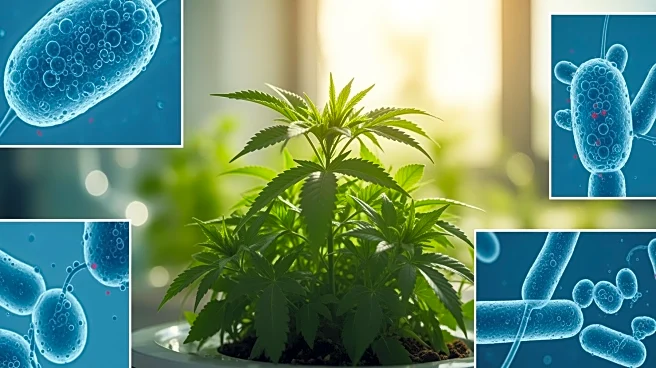What's Happening?
Researchers at Penn State have developed a novel technique to activate dormant soil microbes, which are crucial for nutrient uptake and disease resistance in plants. The study, published in mSystems, highlights
that microbial activity is significantly higher within plant tissues compared to surrounding soil. This discovery suggests that active microbes in the rhizosphere, the soil surrounding plant roots, are more likely to colonize plants than dormant ones. The research indicates that plants provide more nutrients inside their tissues, which may explain the higher microbial activity within the endosphere, the internal plant tissue. This finding could lead to sustainable improvements in agriculture by modulating microbial communities to enhance plant growth.
Why It's Important?
The ability to activate dormant soil microbes has significant implications for agriculture, particularly in improving crop yields and disease resistance. By understanding and manipulating microbial activity, farmers could potentially reduce reliance on chemical fertilizers and pesticides, leading to more sustainable farming practices. This research could benefit the agricultural industry by providing a method to enhance plant growth naturally, thereby increasing food production efficiency. Additionally, it could contribute to environmental conservation efforts by reducing chemical runoff and soil degradation associated with traditional farming methods.
What's Next?
Further research is needed to explore the practical applications of this technique in various agricultural settings. Researchers may investigate how different plant species respond to activated microbes and whether this approach can be scaled for commercial farming. Collaboration with agricultural organizations and farmers could facilitate the integration of this technique into existing farming practices. Additionally, studies could focus on the long-term effects of enhanced microbial activity on soil health and crop productivity.
Beyond the Headlines
This development raises ethical considerations regarding the manipulation of natural ecosystems. While activating dormant microbes could benefit agriculture, it is essential to assess potential impacts on biodiversity and soil health. Researchers must ensure that this technique does not disrupt existing microbial communities or lead to unintended consequences. The study also highlights the importance of interdisciplinary collaboration between microbiologists, agronomists, and environmental scientists to address complex challenges in sustainable agriculture.












